SPECworkstation 3.0.2 Storage Benchmark
SPECworkstation benchmark is an excellent benchmark to test systems using workstation-type workloads. In this test, we only ran the Storage component, which is fifteen separate tests.
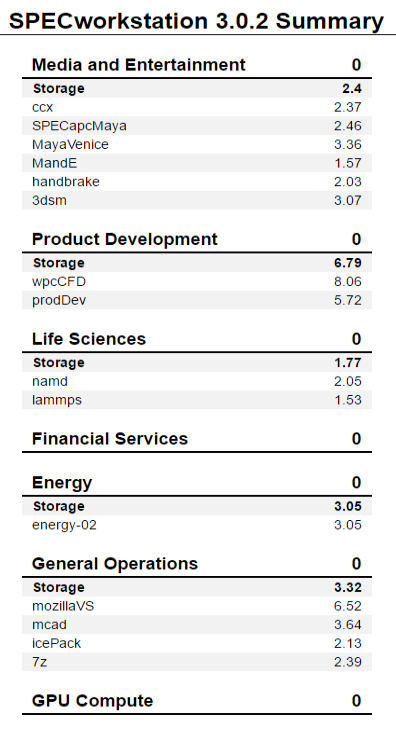
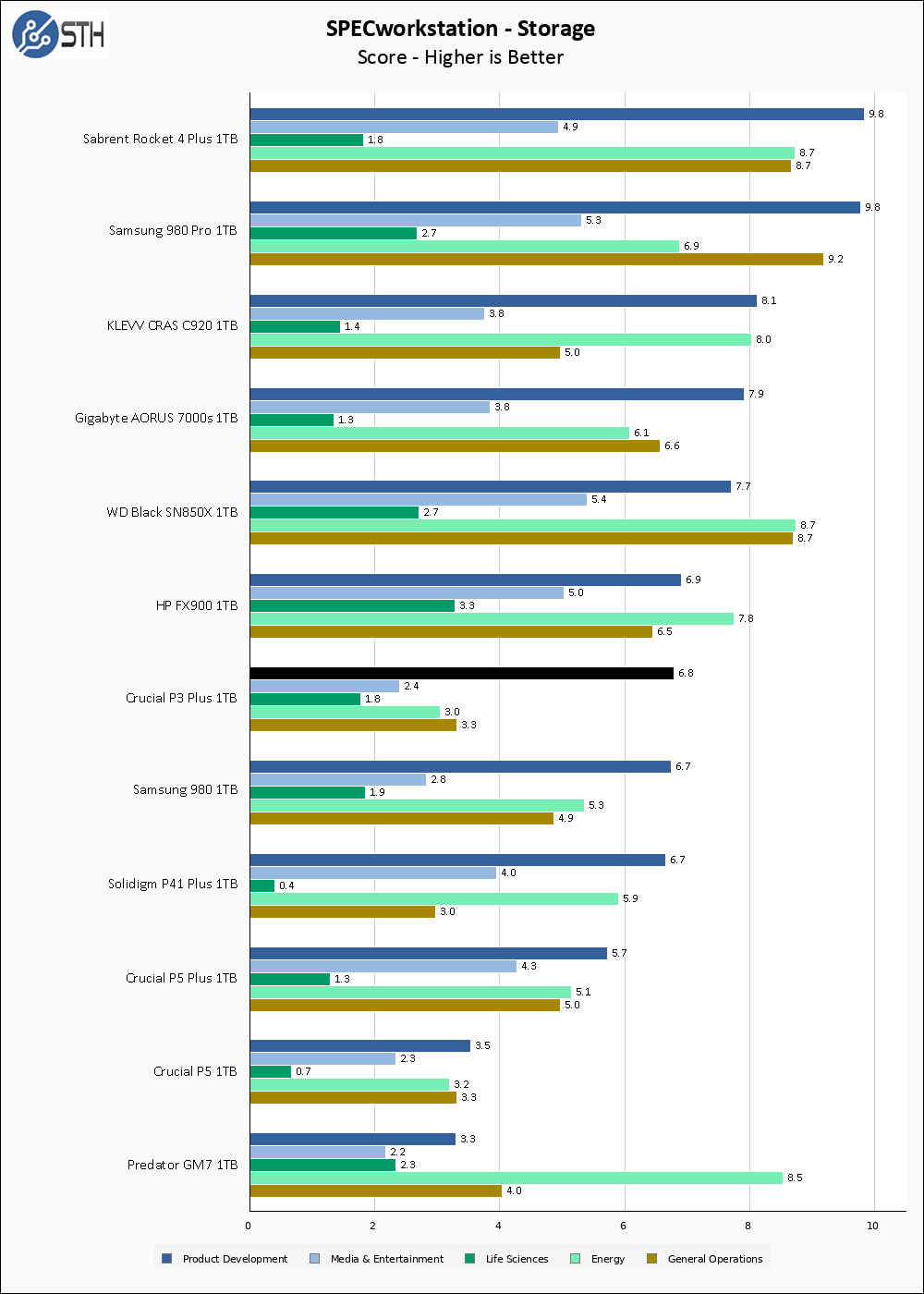
The Crucial P3 Plus 1TB turns in fairly middling SPECworkstation results. The best thing to be said here is that it did not catastrophically fail in any particular test, and it is only at the bottom of the chart in Energy with much more respectable results in Product Development General Operations.
Sustained Write Performance
This is not necessarily a benchmark so much as trying to catch the post-cache write speed of the drive. While I am filling the drive with data to the 85% mark with ten simultaneous write threads, I monitor the drive for the write performance to dip to the lowest steady point and grab a screenshot.
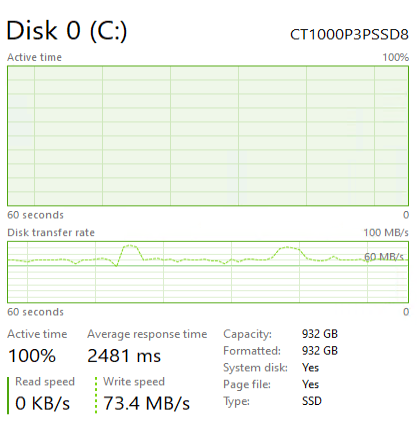
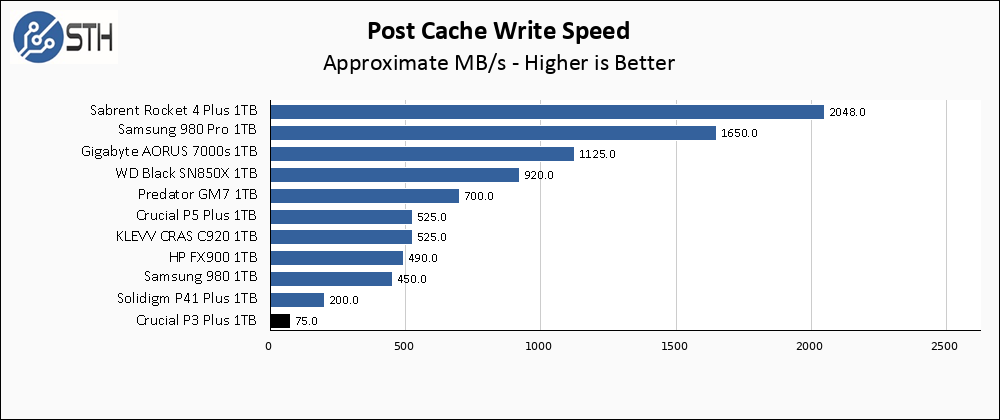
QLC is bad for sustained write speeds outside of the pseudo-SLC cache, and the P3 Plus helps prove that point. If you have lots of large writes to do, these are not the drives you are looking for. This result is nothing short of horrible.
Temperatures
We monitored the idle and maximum temperature during testing with HWMonitor to get some idea of the thermal performance and requirements of the drive.
Crucial P3 Plus 1TB Temps Chart
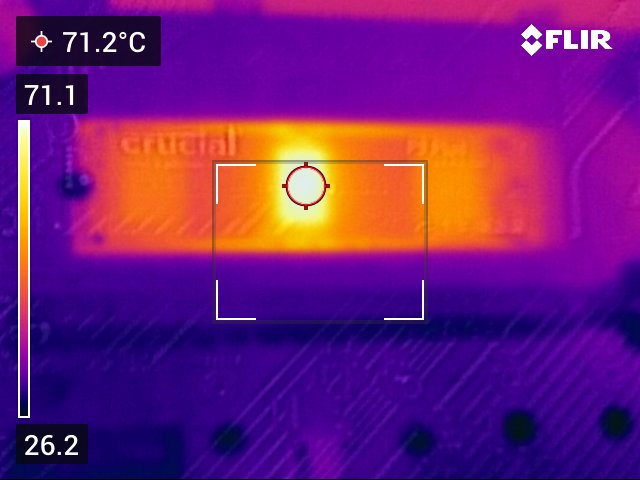
The P3 Plus is a cool-running drive, topping out at 62C in my testing. The FLIR imaging shows slightly higher temperatures, but not by much. This drive does not need a heatsink.
We have been testing many smaller platforms with less airflow, and sometimes the best SSD is the one that does not overheat. Some of the PCIe Gen4/Gen5 SSDs struggle in limited airflow and cooling environments.
Final Words
The Crucial P3 Plus 1TB is $52 as of today. The Solidigm P41 Plus is $50. Every drive that I tested that was markedly better than either of those two drives is at least $15 more expensive, with options like the XPG Blade S70 for $67 (review coming) and PNY CS3140 for $75. If you want better performance than the P3 Plus, then you certainly have options, but there are very few PCIe 4.0 drives at this price point.
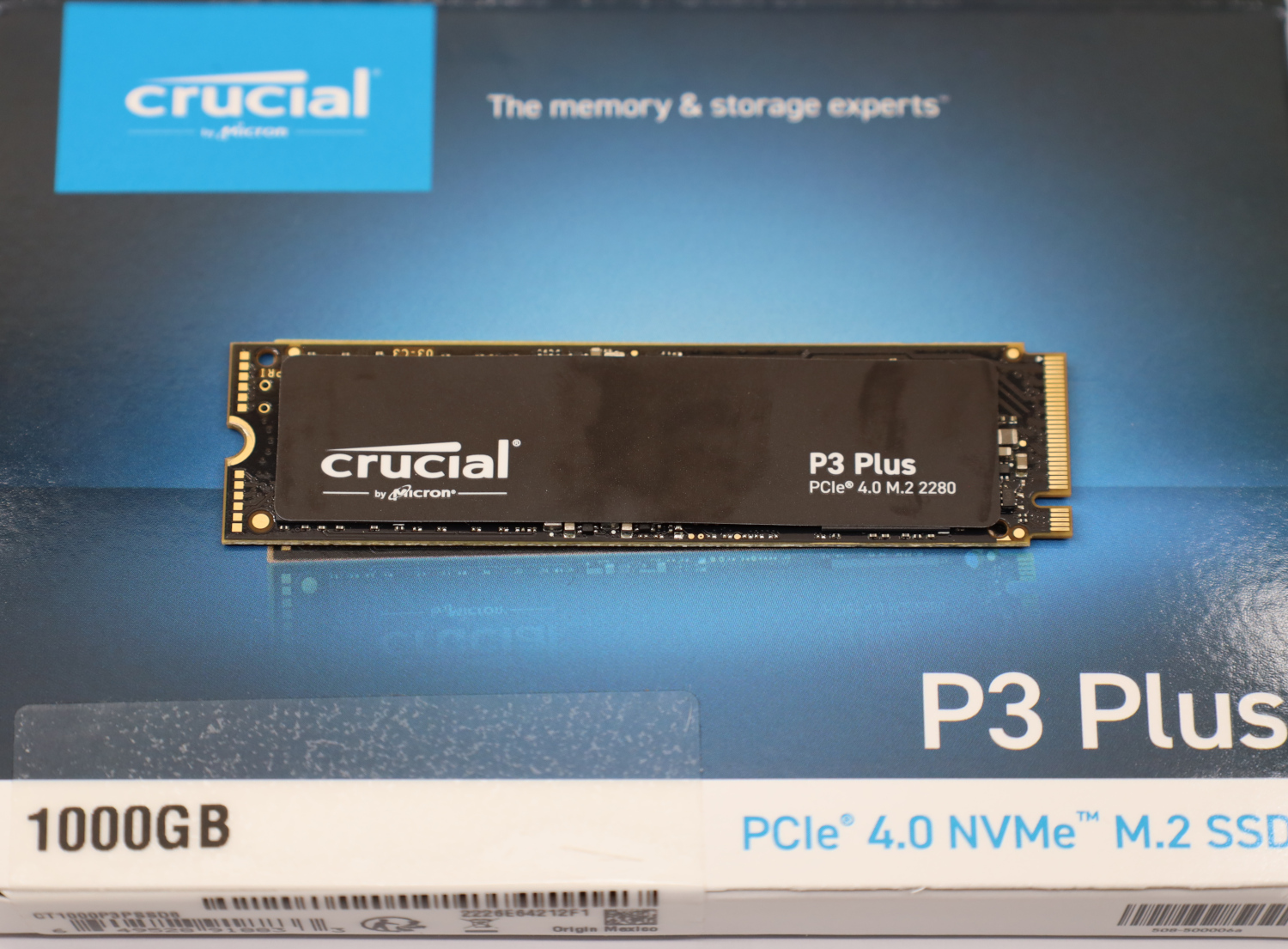
Should you buy the Crucial P3 Plus? There are likely better options. This drive feels very similar to me to the Solidigm P41 Plus, which I was not particularly kind to in my review. With that said, I think both drives have their place, as they are name-brand drives at a very compelling price point that come with 5-year warranties. The Crucial P3 Plus strikes me as a bit of “you get what you pay for”, and in this case, the part you are not paying for is stellar performance. But you get almost everything else, most especially the warranty, so if performance is not your top consideration then the P3 Plus might be one to consider even if it lacks performance consistency and a reasonable endurance rating. Some applications are mostly read-focused.
Still, what an interesting drive.





When a test like ATTO 256MB QD4 32MB scores much better than expected, is the result repeatable? Is there a special pattern of use where the drive really performs that well which could be employed in a disk scheduling algorithm for an operating system?
Alternatively, if it’s a bug in the benchmark, why aren’t all devices affected. If they are, then why in different ways? It seems to me that some source-code auditable tests would be useful. Alternatively, could a ticket be opened with ATTO as to why their software exhibits what appears to be an bug on this test?
I suppose the result could also reflect a separate hardware issue with test rig itself.
Thanks for sharing all the results that were observed. In my opinion reporting the outliers is an important part of treating SSD testing as a science.
Crucial P3 Plus review
For the love of Pete, this reads like homework a student wrote the night before handing it in.
First of all, why do you ignore the use case of a drive before diving in to describe its performance?
This drive, like the Solidigm P41, is focused on the lowest cost per byte. In one of your final paragraphs you mention “The Crucial P3 Plus 1TB is $52 as of today. The Solidigm P41 Plus is $50. Every drive that I tested that was markedly better than either of those two drives is at least $15 more expensive”.
This means these two drives are *at least* 30% cheaper than any competition.
If you were reviewing a Prius you wouldn’t compare it’s performance to a Corvette or Charger yet in this review you state things like:
> This result is nothing short of horrible.
And
> The best thing to be said here is that it did not catastrophically fail in any particular test,
But you follow that immediately with:
> it is only at the bottom of the chart in Energy with much more respectable results in Product Development General Operations.
This is a drive, that based on price, you would *expect* to perform at the bottom in every category, but when it doesn’t you proclaim that it is a horrible device.
The use case matters and seeing benchmarks that are focused on that use case would be more beneficial. As an example, QLC is great for a backup target because those workloads are mostly WORM. There are very few overwrites or modifications to data so very little endurance will be used over the life of the drive.
For a workload like that we are less interested in how quickly it can be filled completely and more interested in how quickly it can inject a ZFS snapshot. (A thing we expect you’re doing based on your TrueNas articles)
Finally, in the Review Overview section you give a score of 6 out of 10 for Feature Set. But nowhere in the article do you cover the features that are implemented or those that are missing. Yet you have a quantitative score for this metric. What features are you scoring this (and all other drives) against?
I know this is the format you’ve used for SSD reviews for quite some time and you have a Moto of “if it’s not broke, don’t fix it”. But this is broke. Your testing methodology has fallen behind the rest of the industry the the execution of specific reviews is lacking.
John Stacker hits the nail on the head. But can you adapt?